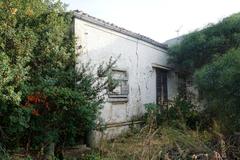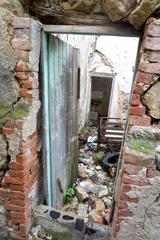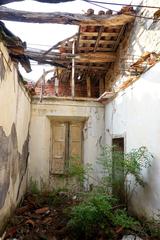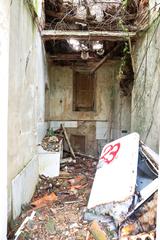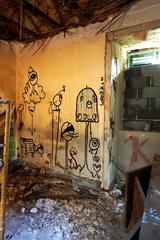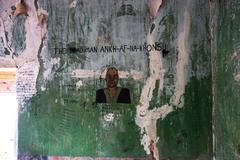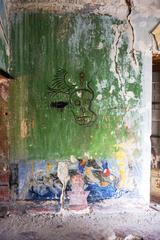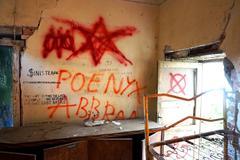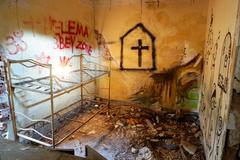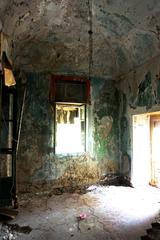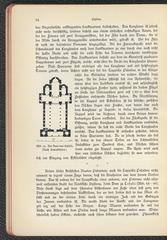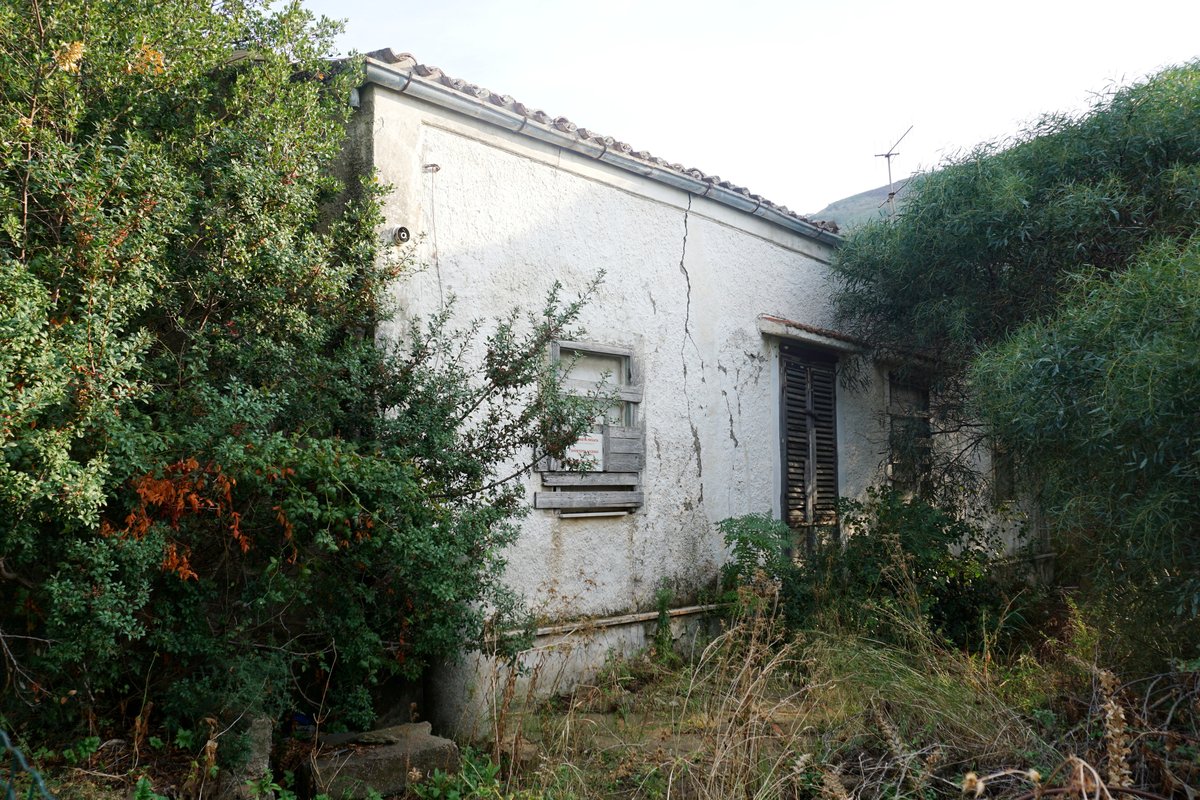
Abbey of Thelema, Cefalù, Italy: Visiting Hours, Tickets, and Historical Sites Guide
Date: 15/06/2025
Introduction: History and Cultural Significance
Situated on Sicily’s picturesque northern coast near Cefalù, the Abbey of Thelema is an evocative monument encapsulating a unique chapter in 20th-century spirituality, avant-garde art, and occult history. Established in 1920 by Aleister Crowley—a figure both infamous and influential in Western esotericism—the Abbey was conceived as an “anti-monastery.” Here, Crowley’s followers could pursue Thelema, a spiritual philosophy founded on the axiom: “Do what thou wilt shall be the whole of the Law” (arcanehorizons.com; atlasobscura.com).
Beyond its function as a spiritual commune, the Abbey became a living work of art. Its walls were adorned with Crowley’s vivid murals, brimming with occult symbolism and erotic imagery that reflected a synthesis of Western and Eastern mystical traditions. Notably, the “Chamber of Nightmares” was designed as an immersive, ritualistic environment, confronting participants with their subconscious fears (aleistercrowley.com.au; atlasobscura.com).
The Abbey’s brief existence was fraught with controversy, including rumors of unorthodox rituals, the tragic death of a follower, and its forced closure by Mussolini’s regime in 1923. Since then, the structure has decayed, many artworks have been lost or defaced, and the site remains fragile and largely inaccessible to the public (weirditaly.com; theworldofsicily.com).
Despite these challenges, the Abbey of Thelema continues to attract visitors interested in esoteric history, experimental art, and Sicily’s cultural tapestry. While access is restricted, the ruins and surrounding landscape are a draw for those intrigued by Crowley’s legacy. This guide offers comprehensive information on the Abbey’s history, current condition, visiting hours, ticketing, accessibility, nearby sights, and travel tips. For updates and immersive content, resources such as the Audiala app and official Cefalù tourism platforms are recommended (goaskalocal.com; comune.cefalu.pa.it).
Origins and Daily Life at the Abbey of Thelema
Aleister Crowley founded the Abbey following a mystical revelation in Egypt in 1904, where he received “The Book of the Law,” the foundational text of Thelema. The Abbey’s guiding principle—“Do what thou wilt”—shaped its daily life, which revolved around spiritual self-discovery, ritual practice, yoga, and study (arcanehorizons.com).
The Abbey’s community was dedicated to disciplined exploration of one’s “true will,” combining meditation, ceremonial rituals, and the practice of sex magick. Far from being a haven for unrestrained hedonism, the Abbey’s ethos emphasized structured personal liberation.
Architecture and Artistic Legacy
Originally a humble farmhouse, the Abbey was transformed into an esoteric sanctuary. Crowley and his followers covered its walls with bold murals—some erotic, others deeply symbolic—drawing on diverse mystical traditions. The “Chamber of Nightmares” stands out for its provocative, initiation-inspired art meant to challenge and transform the observer (atlasobscura.com).
Although many murals were later whitewashed by locals, fragments persist, offering rare insight into Crowley’s artistic and spiritual vision.
Key Events and Controversies
The Abbey’s operation (1920–1923) was turbulent, marked by rumors of drug use, sexual rituals, and the death of Raoul Loveday, a British follower. Loveday’s passing, reportedly due to typhoid, fueled sensational media stories and led to Crowley’s expulsion by Italian authorities and the Abbey’s closure (atlasobscura.com).
The Abbey Today: Visiting Hours, Tickets, and Practical Tips
Visiting Hours and Entry
Current Status:
The Abbey of Thelema is privately owned and structurally unsafe. As of June 2025, it is officially closed to the public. There are no regular visiting hours or ticket sales; entry is prohibited for safety and legal reasons (theworldofsicily.com; blog.siciliansecrets.it).
- Occasional Guided Tours: Rare, pre-arranged tours may be organized by local cultural associations. These must be booked well in advance; spontaneous visits are not permitted. Always verify through the Comune di Cefalù or local tourism offices before planning a visit.
Getting There
- Location: Contrada Santa Barbara, near the Cefalù Municipal Stadium, approximately a 20–30 minute walk from Cefalù’s historic center. The route is unmarked, overgrown, and includes uneven paths (wondersofsicily.com).
- By Train: Cefalù is accessible from Palermo by train (about 50 minutes). Taxis or buses connect the station to the Abbey area.
- By Car: Parking is limited; visitors may need to park in town and walk.
- On Foot: The route is uphill and can be hot in summer.
Accessibility
- The terrain is rough and overgrown; not wheelchair accessible. Those with mobility issues should avoid attempting the walk.
Safety
- The Abbey is dilapidated and dangerous. Entry is strongly discouraged and illegal.
- The building is structurally unstable, with areas at risk of collapse.
Facilities
- There are no visitor amenities (restrooms, shops, water) at the site; plan accordingly.
What to See Nearby
While the Abbey itself is off-limits, Cefalù boasts a wealth of attractions:
- Cefalù Cathedral: UNESCO World Heritage site (whc.unesco.org)
- Medieval old town: Picturesque streets and historic architecture
- Lavatoio Medievale: The medieval washhouse
- Beaches: Beautiful sandy stretches along the Tyrrhenian coast
Local museums and literary works by Sicilian authors provide further context for the Abbey’s history (weirditaly.com; blog.siciliansecrets.it).
Artistic Experimentation and Legacy
Crowley’s tenure at the Abbey marked an intense period of artistic output, influenced by Paul Gauguin and the Symbolists. His murals, automatic paintings, and ritual art anticipated later trends in surrealism, installation, and conceptual art (aleistercrowley.com.au).
Some works created during this period survive in private collections, notably the Palermo Collection. The Abbey’s artistic rebellion left a subtle yet lasting mark on Cefalù’s cultural scene.
Legal and Ethical Considerations
- The Abbey is private property. Trespassing is illegal and enforced.
- Any attempt to enter, remove artifacts, or vandalize is a criminal offense.
- Visitors are expected to respect the site’s spiritual and cultural significance.
Practical Tips
- Plan Ahead: Use official resources (visitcefalu.com) and the Audiala app for updates.
- Dress Appropriately: Wear sturdy shoes and bring water, especially if exploring nearby hills.
- Photography: Permitted from public roads; interior photography possible only during authorized tours.
- Language: Italian is primary; English is spoken in tourist zones, but less so among locals.
Frequently Asked Questions (FAQ)
Q: Can I visit or enter the Abbey of Thelema?
A: No, the site is closed due to safety and legal restrictions. Entry is prohibited.
Q: Are there any guided tours or tickets?
A: Rarely, and only by advance arrangement through authorized associations. There is no ticket office.
Q: Is the Abbey wheelchair accessible?
A: No, the approach is not suitable for wheelchairs or those with mobility issues.
Q: Are there facilities at the Abbey?
A: No, there are no restrooms or shops; use facilities in Cefalù.
Q: What else can I see in Cefalù?
A: The Cathedral, medieval town, beaches, and local museums.
Visuals and Interactive Elements
Alt text: Exterior of the Abbey of Thelema showing surrounding olive groves and the Tyrrhenian Sea in Cefalù, Sicily.
Interactive Map of Cefalù Historical Sites including the Abbey of Thelema
Plan Your Visit and Stay Connected
- For real-time updates on Abbey access and Cefalù’s cultural sights, download the Audiala app.
- For official information, check the Cefalù Tourist Office or Comune di Cefalù.
- Follow Facebook and Instagram for travel tips and news.
Summary: Key Tips and Recommendations
- The Abbey of Thelema is closed to the public due to structural and legal restrictions.
- Respect all safety warnings and property boundaries.
- Explore the Abbey’s story through virtual tours, literature, and local exhibitions.
- Cefalù offers a wealth of alternative historical and cultural attractions.
- Use official resources and plan ahead for the best experience in the region.
References
- Father of the Occult: Aleister Crowley, the Controversial Magician’s Life and Legacy, Arcane Horizons
- Aleister Crowley’s Abbey of Thelema, Atlas Obscura
- The Cefalù Period: Artistic Culmination (1920–1923), aleistercrowley.com.au
- A Local’s Guide to Visiting Cefalù, Sicily, GoAskALocal
- The Abbey of Thelema Cefalù, The World of Sicily
- The Abbey of Thelema Cefalù, Weird Italy
- Supernatural Cefalù: The Black Magic of Aleister Crowley, Blog Sicilian Secrets
- Cefalù Tourist Office Official Site
- Comune di Cefalù Official Site
